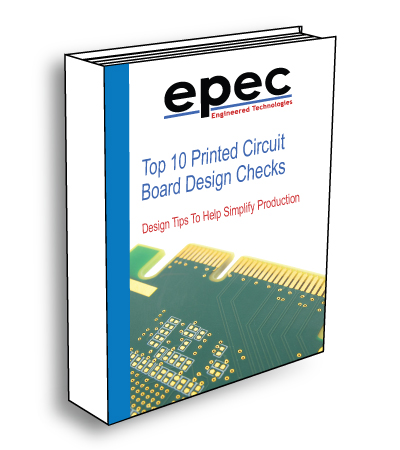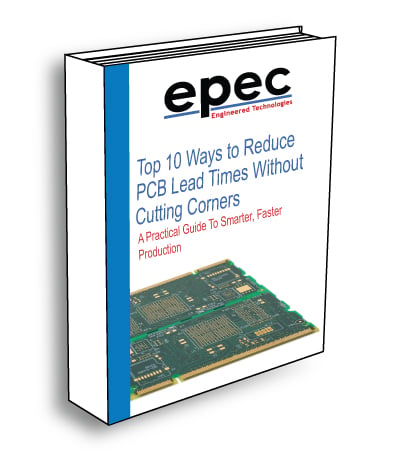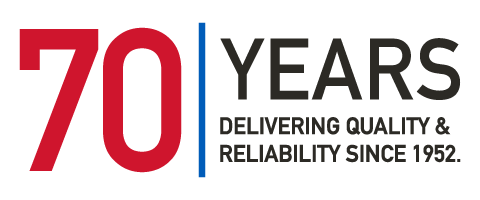PCB Layout and Design Services
Understanding the Difference Between PCB Layout and PCB Design/Engineering
When it comes to designing printed circuit boards, the terms "PCB layout" and "PCB design/engineering" are often used interchangeably. However, they refer to different stages and aspects of the PCB development process.
To start, we want to help you understand the key differences between PCB layout and PCB design/engineering, so you can better grasp their roles in creating reliable and efficient electronic circuits.
Get started here, PCB Design & Layout: Checklist of What You Need Before You Start - Q&A.
What is PCB Design/Engineering?
PCB design or engineering encompasses the complete process of creating a printed circuit board from scratch. It starts with conceptualizing the circuit, creating a schematic diagram, selecting components, and ends with the final design ready for manufacturing. Here are guidelines for designing a printed circuit board.
Key Aspects of PCB Design/Engineering:
- Schematic Design: Creating a logical representation of the circuit, defining how components like resistors, capacitors, ICs, and connectors are interconnected.
- Component Selection: Choosing the right components based on electrical and mechanical requirements.
- Signal Integrity Analysis: Ensuring that signals on the PCB do not degrade due to crosstalk, impedance mismatches, or other electrical issues.
- Thermal Management: Planning for heat dissipation and proper ventilation to avoid overheating components.
- Mechanical Considerations: Defining the board shape, mounting holes, and other physical aspects for integration into a final product.
- Tools Used: PCB design engineers typically use Electronic Design Automation (EDA) tools such as Altium Designer, Cadence Allegro, Eagle, KiCad, and OrCAD to carry out these tasks.
What is PCB Layout?
PCB Layout, on the other hand, is a more focused step that comes after the schematic design phase. It involves the physical arrangement of components on the PCB and the routing of electrical connections (traces) between them. The deliverable of this step is a complete set of working Gerber data that can be used to manufacture the bare PCB and to assemble all of the components.
Key Aspects of PCB Layout:
- Component Placement: Arranging components in a way that optimizes space, minimizes signal interference, and supports efficient routing.
- Trace Routing: Connecting components using conductive traces that carry electrical signals and power, ensuring that traces are short and free from cross-talk.
- Layer Management: Deciding the number of layers for the PCB, which affects cost, complexity, and performance.
- Design Rule Checks (DRC): Ensuring that the layout adheres to the manufacturer’s rules for trace width, spacing, and clearances to avoid issues in production.
- 3D Visualization and Prototyping: Using 3D views to visualize how the PCB will fit in the final product enclosure, aiding in mechanical integration.
- Tools Used: PCB layout designers use specialized features within the same EDA tools mentioned above for placing components, routing traces, and running design rule checks.
Key Differences Between PCB Design/Engineering and PCB Layout
| Aspect | PCB Design/Engineering | PCB Layout |
|---|---|---|
| Focus | Overall circuit functionality and electrical design | Creating Gerber data that outlines the physical placement of components and trace routing |
| Starting Point | Begins with the conceptualization and schematic design | Begins after the schematic design is completed |
| Skills Required | Knowledge of electronics, circuit theory, signal integrity | Understanding of spatial design, manufacturability |
| Deliverable | A schematic and BOM will now be used for a PCB layout | Complete set of Gerber data and drawings |
While PCB design/engineering and PCB layout is closely related, they represent different phases in the PCB creation process. PCB design/engineering is about the "what" and "why" of a circuit, focusing on ensuring that the electronic design meets all functional requirements. PCB layout, however, is about the "how" — how to turn that design into a physical board that can be manufactured and assembled efficiently.
Understanding these differences is crucial for anyone involved in PCB development, from engineers to manufacturers, as each step requires different skills and tools to ensure a successful final product.
In today's rapidly evolving technological environment, companies engaged in PCB design services must possess a diverse range of circuit design capabilities to ensure the functionality, reliability, and efficiency of electronic devices. Epec Engineered Technologies has established itself as a leader in the PCB design industry by mastering these essential circuit design skills:
Schematic Design/Capture
Epec excels in creating detailed schematic diagrams that accurately represent electrical connections and components. Our capabilities include:
- Deep understanding of circuit theory and component characteristics.
- Expertise in using advanced schematic capture software.
- Producing clear and precise schematics to facilitate efficient PCB design.
- Ensuring signal integrity through optimal component selection and placement.
PCB Layout Design
At Epec, we specialize in PCB layout design, which involves the strategic placement of components and the routing of electrical connections. Our key strengths include:
- Proficiency with leading PCB design software such as Altium, Eagle, and Mentor.
- In-depth knowledge of layer stack-up, PCB materials, and design rules.
- Optimization of layouts to enhance signal integrity and manage thermal performance.
- Extensive experience with high-speed and high-frequency design principles.
Stack-Up Design
Epec's expertise in stack-up design ensures optimal performance and manufacturability of PCBs. Our approach involves:
- Crafting balanced layer stack-ups that optimize signal, power, and ground layers.
- Minimizing crosstalk and signal degradation through careful material selection and layer configuration.
Cost Optimization
Epec is dedicated to delivering high-quality designs while minimizing costs. Our cost optimization strategies include:
- Identifying and mitigating cost drivers during the design process.
- Selecting cost-effective components without compromising performance.
- Collaborating closely with suppliers to reduce material and production expenses.
Here is a guide on outsourcing PCB layout and design to reduce costs and time to market.
Footprint Layout
Accurate footprint design is critical for manufacturability and reliability. Epec excels in:
- Creating precise footprint layouts that are fully compatible with manufacturing processes.
- Adhering to industry standards and ensuring footprint accuracy through simulation and testing.
Signal Integrity Analysis
Epec is committed to ensuring the signal integrity of high-speed circuits. Our capabilities in this area include:
- Simulation and analysis to prevent signal degradation.
- Expertise in transmission line theory, impedance matching, and signal routing.
- Utilizing advanced tools like SPICE and HyperLynx to mitigate issues like crosstalk, reflections, and EMI/EMC.
Power Integrity and Distribution
Epec's power integrity solutions ensure reliable and efficient power distribution across PCBs. Our expertise includes:
- Designing robust power distribution networks (PDN) and optimizing power plane layouts.
- Minimizing noise and ensuring stable power supply through comprehensive simulation and analysis.
- Implementing strategies for low-power designs and efficient power management.
Reverse Engineering
Reverse engineering services are used to replicate or modify existing PCBs, often for legacy systems or to improve existing designs.
- Engineers analyze existing designs to create new schematics and layouts that replicate the original functionality or enhance it.
Thermal Management
Effective thermal management is crucial for preventing overheating and enhancing the longevity of electronic components. Epec provides:
- Advanced thermal simulation and analysis to predict heat dissipation.
- Design solutions for heat sinking, airflow optimization, and effective use of thermal vias and copper pours.
- Selecting materials that offer superior thermal performance and reliability.
Design for Manufacturability (DFM)
Epec ensures that all PCB designs are optimized for manufacturability, reducing costs and lead times. Our DFM capabilities include:
- Extensive knowledge of manufacturing processes and constraints.
- Close collaboration with manufacturing partners to implement design rules for both assembly and fabrication.
- Streamlining designs to minimize production costs while maintaining high quality.
Library Development and Database Construction/Verification
Library development involves creating and maintaining a comprehensive library of electronic components and their associated footprints, symbols, and attributes for use in PCB design software.
- Engineers develop accurate symbols and footprints following IPC standards and specific design requirements.
- Component libraries are continuously updated with new components, discontinued parts, and changes in manufacturer specifications.
- Database Construction refers to building a centralized database that contains all necessary information related to components, materials, design rules, and manufacturing processes.
- This database is used to ensure consistency and accuracy across multiple projects and teams.
- Verification ensures that the component libraries and databases are accurate, up-to-date, and compliant with industry standards.
- This includes cross-referencing manufacturer datasheets, verifying component models, and ensuring that all parameters align with design requirements.
- Proper database management reduces design errors, avoids rework, and facilitates smoother design iterations and updates.
By mastering these circuit design capabilities, Epec provides industry-leading PCB design services that meet the stringent demands of modern electronics markets. We ensure that every PCB we design is reliable, efficient, and ready for manufacture, catering to the diverse needs of our clients.
With over 70 years of experience in PCB manufacturing, Epec has cultivated a profound depth of expertise that sets us apart in the industry. Our extensive history not only underscores our commitment to excellence but also our ability to evolve and adapt to the ever-changing demands of the electronics market. This wealth of experience translates into a unique capability to engineer PCBs that consistently surpass customer expectations.
Our seasoned team of engineers and designers brings unparalleled knowledge to every project, ensuring that we tackle even the most complex design challenges with confidence and precision. We leverage our long-standing relationships with suppliers and manufacturing partners to source the highest quality materials, ensuring the reliability and performance of our PCBs.
Moreover, our historical data and accumulated insights allow us to anticipate potential issues before they arise, enabling us to implement proactive solutions that enhance the overall quality and efficiency of our designs. Our legacy of innovation and continuous improvement means that we are always at the forefront of technological advancements, integrating the latest methodologies and tools into our design processes.
At Epec, our decades of experience inform every step of our design and manufacturing process, ensuring that each PCB we produce not only meets but exceeds our customers' requirements. Our commitment to quality and excellence is unwavering, making us a trusted partner for all your PCB design needs.
By mastering these circuit design capabilities, Epec provides industry-leading PCB design services that meet the stringent demands of modern electronics markets. We ensure that every PCB we design is reliable, efficient, and ready for manufacture, catering to the diverse needs of our clients.
Need Help with a Circuit Board Design?
Streamline your go to market with our expert PCB design services. Contact us to discuss your project needs with our 24/7 engineering support. Your success is our specialty.
Request a Quote Request Design Support Request More Information




